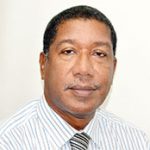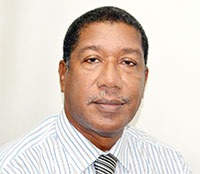AS our life span increases, the exposure of aged individuals to routine dental care will no doubt increase. This is of considerable importance as people over the age of 50 have a large portion of serious incapacitating diseases and appear less able to tolerate stresses and trauma inflicted on them.
If anyone were to ask me what I fear most about dentistry, my answer would be to have a patient die in my chair. For many years dentists have been taught to dread that occurrence or even to have a serious medical emergency during dental treatment. Notwithstanding, 10 percent of all non-accidental deaths in the general population are sudden, unexpected, and frequently occur in a rather young age group.
Although not always appreciated as such, the practice of dentistry involves physiologic (physical) stress to many patients. For instance, it has been demonstrated that as many as 40 percent of patients subjected to local anaesthesia and multiple dental extractions will have cardiac arrythmias (irregular heartbeats).
Obviously, most individuals tolerate such insult very well. However, this is not always so and it poses a severe problem in patients with certain recognised diseases, the aged, and in persons taking certain types of medication.
Some form of cardiovascular (heart and blood vessels) disease is found in a very large segment of the population, with an increasing incidence in the older patient. In fact, various types of cardiovascular disorders represent the leading cause of death, thus making it by far the most important health problem in Guyana apart from AIDS.
But how all this is related to an ordinary visit to the dentist? This is how. Dental patients frequently are required to receive a local anaesthetic prior to most regular dental procedures. Every unit of local anaesthetic contains a substance whose purpose is to ensure that the principal drug remains as long as possible in the site where the anaesthetic was injected. If this does not happen, the numb effect would only last for a few minutes.
This substance, called a vasoconstrictor, is also capable of elevating the patient’s blood pressure. The sudden elevation of blood pressure can result in a stroke. The second highest cause of death by vascular (vessel) diseases is stroke. Ischaemic heart disease, which includes myocardial infarction and angina pectoris, are simply conditions in which the heart does not get sufficient blood to circulate between the cells and its muscular walls, and so immense pain results.
Although unanticipated myocardial infarction, collapse, and death are always a potential occurrence, the practicalities of day-to-day practice indicate that certain types of patients are especially sensitive to the stress of dental treatment.
These include individuals with congestive heart failure, angina pectoris, and recent myocardial infarction. All these conditions come under the heading of ischaemic heart disease, the leading cause of death from vascular disease.
Some significant factors which make a patient a prospective candidate for death in the dental chair are physical inactivity (“white-collar workers”), obesity ( excessive body fat), stress or aggression, and inveterate smoking. These facilitate heart disease.
Patients who know they suffer from cardiovascular disease, which includes high blood pressure, or are on medication for any illness, should inform their dentist before beginning treatment. Their life may literally depend on it.



.jpg)








